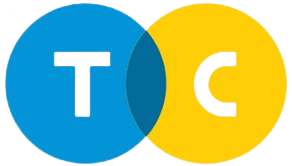Ray tracing can be credited for the stunning visual effects and imagery seen in many science fiction films. The rendered graphics blend seamlessly into the background, making it impossible to tell that any special effects were used.
Special effects in video games are now on par with those in movies, and players can see them play out in real time.
Hardware utilized in film sequences is complex and costly; it does ray tracing computations utilizing millions of photon beams, a time-consuming process.
Whether an object is seen as transparent, translucent, or opaque depends on how the light hitting it is reflected, absorbed, or refracted. The eyes receive the photons from the light source, and the brain makes sense of them.
This is essentially how ray tracing works, just in reverse.
This technique “traces” the path of light from a hypothetical eye or camera to all the elements in a scene to produce an image.
Instead of wasting time and resources by tracing rays from the light source onto each and every object in an image, you can just use this method.
What End Does Ray Tracing In Three Dimensions Serve?
Using the technology of 3D ray tracing, programmers may create realistic light simulations. The lighting is more realistic, and you can see reflections of things that aren’t even in the picture.
Ray tracing in three dimensions is accomplished by means of algorithms within the programme, and it all starts at the lens of the camera. The ray-traced light travels in all directions and reflects off of everything it encounters. It even takes on their hues and shine. The software calculates which light source would have the most significant impact on each individual ray.
Before recently, ray tracing was not feasible for use in video game visuals due to the large amount of processing power it requires.
This is because mapping an object from the 3D virtual world to the monitor, which only supports 2D viewing, requires the computer to determine more than 2 million pixels of the 1080p display.
The camera’s ray or rays must be projected through each pixel, and the computer must check to determine whether any rays meet any triangles.
In case you didn’t know, computer graphics are made up of millions of tiny triangles and other shapes called polygons. The data, including the color of the triangle that the ray touches, and the distance from the camera are used by the software algorithm to calculate the appropriate color for the final pixel.
The software also accounts for rays that reflect off or pass through a triangle.
Only by following many rays through each pixel can we achieve a realistic representation of an object.
The price, however, continues to rise.
How is 3D ray tracing typically put to use?
In 1982, work began on implementing ray tracing for use in computer graphics; by 1985, the Fujitsu Pavilion in Tsukuba was displaying the first publicly released images created using the technique. This film was produced in 1982 on Osaka University’s LINKS-1 Computer Graphics system.
Since then, ray tracing’s real-time performance has increased, and it’s regularly used in modern interactive 3D graphics software. Things like producing images, making computer and video game demos, and similar activities fall under this category.
So that players can experience the ray tracing’s real-time effects, all next-gen consoles incorporate ray tracing hardware components.
The Gateway To The Digital Universe Is 3D Visualization.
From a 3D model, 2D screen visuals can be rendered using 3D rendering. Images like this are created using data sets that specify attributes like color, material, and texture.
As early as the 1960s, when “father of computer graphics” Ivan Sutherland developed Sketchpad at MIT,
3D rendering was being used for computer graphics. Yet William Fetter had already put it to use, simulating the pilot’s quarters with his own image of a pilot.

